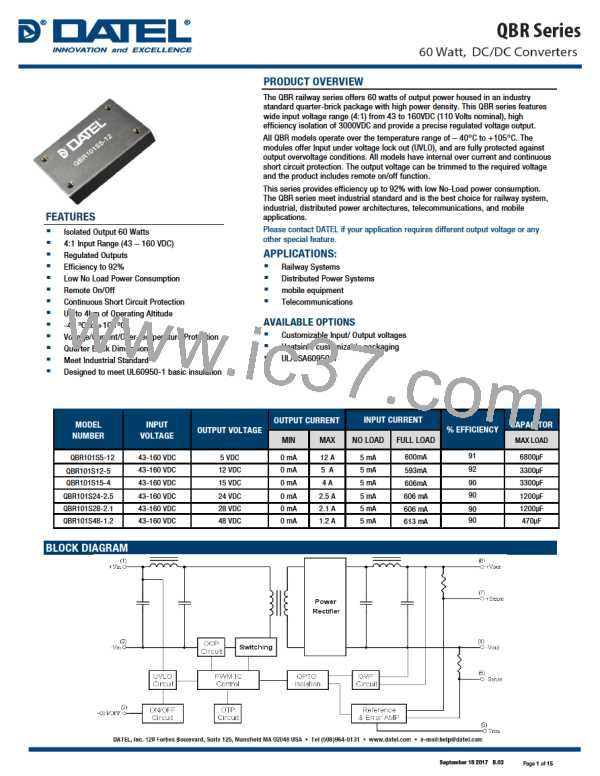Example (with heatsink M-C421)
Power Dissipated vs Ambient Temperature and Air Flow with heatsink M-C421
AIR FLOW RATE
TYPICAL Rca
30
28
26
24
22
20
18
16
14
12
10
8
Natural Convection
20ft./min. (0.1m/s)
4.78 ℃/W
Natural Convection
20 ft./min. (0.1 m/s)
100 ft./min. (0.5m/s)
200 ft./min. (1.0m/s)
300 ft./min. (1.5m/s)
400 ft./min. (2.0m/s)
2.44 ℃/W
2.06 ℃/W
1.76 ℃/W
1.58 ℃/W
100 ft./min. (0.5 m/s)
200 ft./min. (1.0 m/s)
300 ft./min. (1.5 m/s)
400 ft./min. (2.0 m/s)
6
4
2
0
0
10
20
30
40
50
60
70
80
90
100
Ambient Temperature ,Ta(Deg. C)
What is the minimum airflow necessary for a QBR101S12-5 operating at nominal line voltage, an output current of 5A, and a maximum ambient
temperature of 60℃?
Solution:
Given:
Vin=110Vdc, Vo=12Vdc, Io=5 A
Determine Power dissipation (Pd):
Pd = Pi -Po = Po(1-η)/η
Pd = 12×5×(1-0.92)/0.92 = 5.22Watts
Determine airflow:
Given: Pd = 5.22W and Ta = 60℃
Check above Power de-rating curve:
Pd<8.4W, Natural Convection
Verify:
Maximum temperature rise is
△T = Pd × Rca=5.22×4.78=24.95℃
Maximum case temperature is Tc=Ta+△T=84.95℃ <105℃
Where:
The Rca is thermal resistance from case to ambient environment.
Ta is ambient temperature and Tc is case temperature.
September 18 2017 B.03
Page 6 of 15

 DATEL [ DATEL, Inc. ]
DATEL [ DATEL, Inc. ]